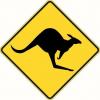Sorry, LV and antique afficianados - you and I have no argument unless you choose to start one, and - with all due respect - I'd prefer you didn't. I will be buying a LN (unless someone has lost their mind and wants to sell me a Marcou or Holtey smoother at a ridiculous price).
I'm not an over-the-top neander, but a regular user of my planes, with plans to do even more with them. I need to be able to do a better job with figured woods.
My next plane will be a LN 4 or a LN 4-1/2. I already have a number of planes, but the ones that bracket this decision are LN #3, LN LA smoother, and LN LA Jack.
Either way I go, I will get an extra frog so I have both 45* and 50*. Or, maybe an extra blade ground as appropriate.
My questions:
(a) Given what I already have, which makes more sense to you die-hards - 4 or 4-1/2? I am leaning toward the 4-1/2 - heft and blade width.
(b) Which makes more sense, extra frog or extra blade? Not sure which way to go. Yes, I could get 2 planes, but ain't gonna happen anytime soon.





 Reply With Quote
Reply With Quote
 Kinda serious actually, buy one LN and then see if you can't get a rust bucket and revive it.
Kinda serious actually, buy one LN and then see if you can't get a rust bucket and revive it. 






